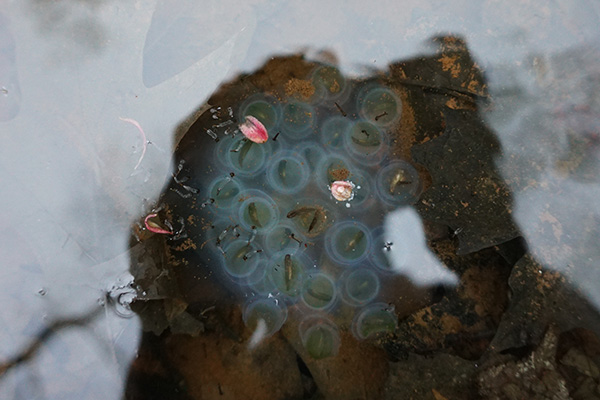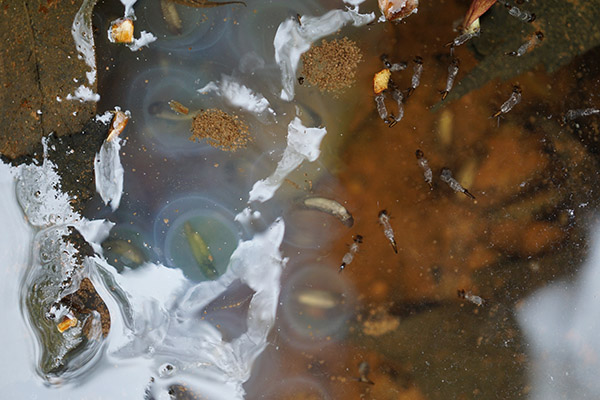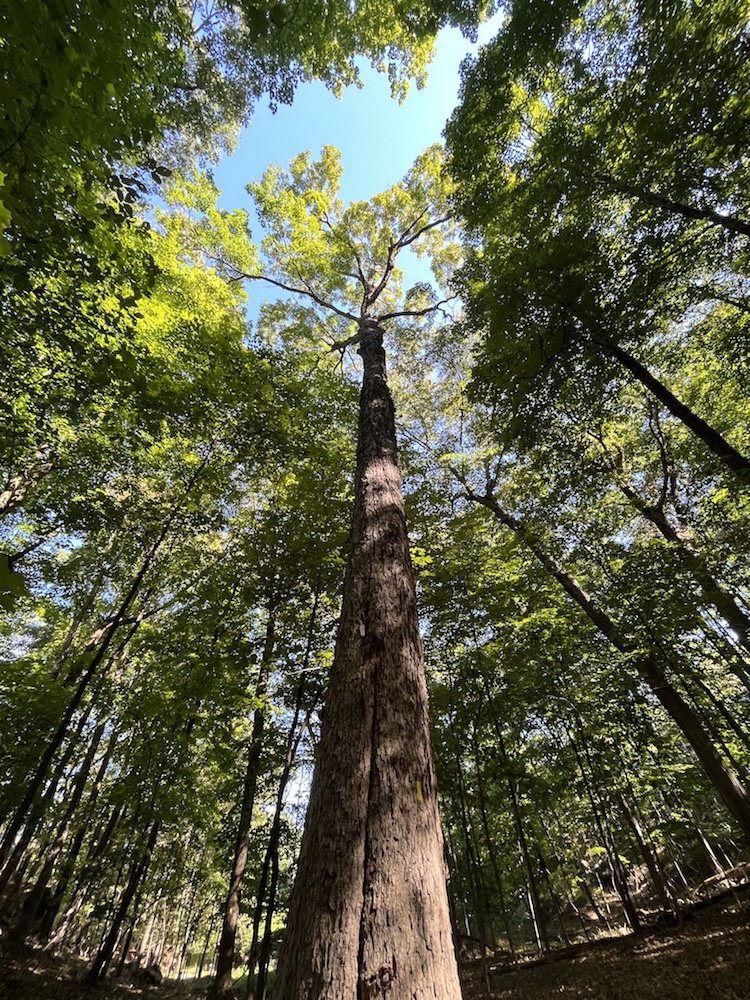A vernal rut’s not a bad place to grow up if you’re a salamander.
There are 18 species of salamanders in New York. These amphibians can be found across the state in varying degrees of abundance. The northern redbacked salamander is the most common, even more widely distributed than the ubiquitous red eft stage of the red-spotted newt. It seems that every rock, log, or pile of leaves I’ve moved this spring have hosted a northern redback. I immediately cover them again because they breathe through their skin and must retain moisture to do so.

Northern Redbacked Salamander
Red eft stage of the Red-Spotted Newt
Spotted salamanders are also numerous in the state, but seen more rarely. I saw one under a log next to one of the ruts-turned-vernal-pools, but didn’t have a camera that day. Like other mole salamanders, spotted ‘sals’ lay their eggs in vernal pools in the spring. In our pools, their egg masses were plentiful.

The round gelatinous masses are multiple spotted salamander egg masses.
We first noticed them at the beginning of May as we took daily walks to the top of the hill and around the property watching the spring budding begin. I had seen egg masses before, but wasn’t sure if these were salamander or frog. A quick Google search confirmed they were spotted salamander. Wood frog egg masses aren’t surrounded by an extra layer of gelatin as these were. Also, American toads lay eggs in a line instead of a mass.
When we first saw the masses, the occupants looked like tiny blobs with heads. The eggs were obviously laid over a period of time as evidenced by the sals in different stages of development. Also, there were many eggs that looked cloudy inside and I watched those with white centers closely, but they never developed into salamanders.

May 1
May 3
May 3. White-centered eggs never developed embryos.
Spotted salamanders have an interesting symbiotic relationship to algae. It is found in their eggs providing oxygen to the embryos and is taken into their bodies, possibly assisting in processing nutrients.
May 7
May 8. Green algae help get oxygen to the growing embryos.
On May 10, a salamander appeared to be “hatching” from its egg. What the photo doesn’t show is that it was actually being forced out by one of the insect larvae. On returning to the pool the next day I found the hatchling floating lifelessly above the egg with a whitish film around it and its tail missing. Upon seeing the copious amounts of insect larvae in the pools I thought they would be making an excellent buffet for the hatchlings. I didn’t consider that the predation would go both ways.
May 10. In the center of the photo is a salamander being forced to exit its egg.
By May 15, there were tadpoles in the pool. Some sals were out of their eggs, but still in the mass. Some masses had visibly thinned. On June 2, a full month after we began watching the egg masses, many salamanders had pushed free of their eggs and were loose in the pools. The most easily seen were still in the egg mass area ostensibly for protection, but it also made them easier to spot. There was a three inch long hatchling in one of the pools but it was too fast to photograph.

May 15. American toad tadpoles are now playing in the pool.

May 15. Some hatchlings are out of their eggs but remain in the relative safety of the egg mass.

May 15. This mass has visibly thinned from when it was first photographed on May 1 seen above.

May 20. This is all that remains of the egg mass by the 20th.

May 20. In the largest mass hatchlings remain in the safety of the mass area.

May 20. A hatchling hides on a leaf in the bottom right quadrant of the photograph.

May 27. A frilly-gilled hatchling still shelters in the safety of the largest mass.
I expected to walk up the hill one day to find the egg masses depleted and little hatchlings throughout the pools, but instead of hatching en masse the event was staggered through time. There were still some sals in eggs on June 2. From a biological standpoint, it makes more sense for hatching to occur over time. If they all hatched at once, a predator could have demolished the entire group. This way they have a chance to continue. Good luck to them all!
For more blogs on vernal pools and the wildlife they contain, check out the following:
Skidding Ruts Turned to Vernal Pools
Turned Vernal Pools: Toad Eggs and Tadpoles











